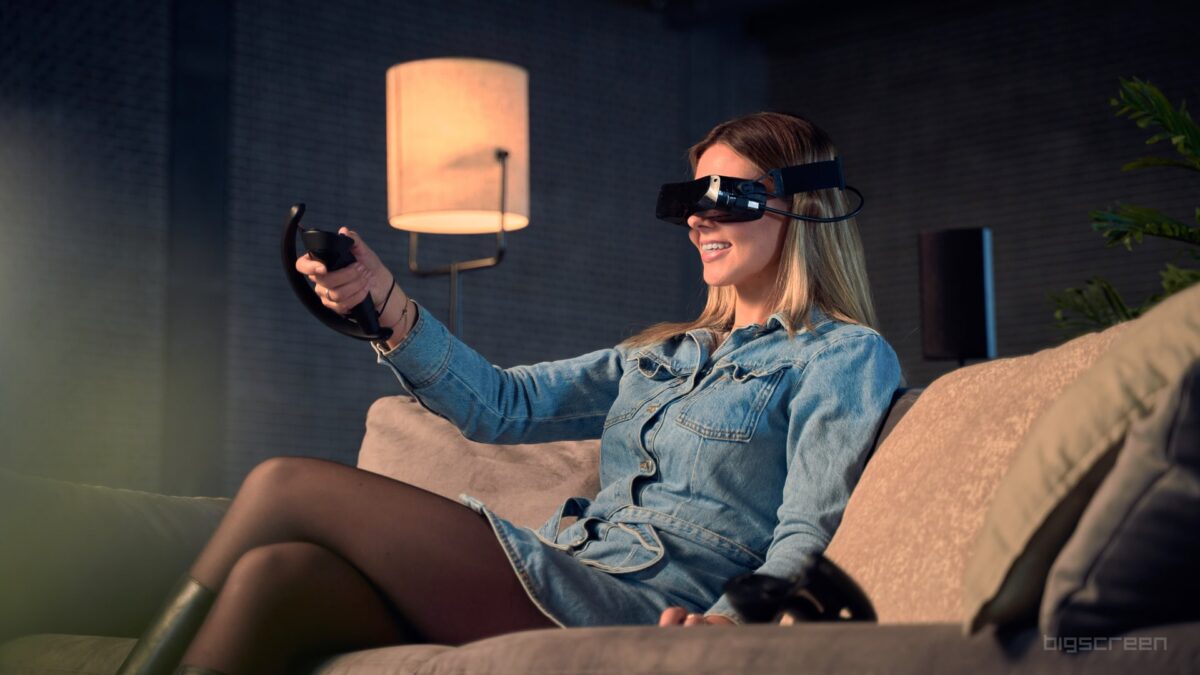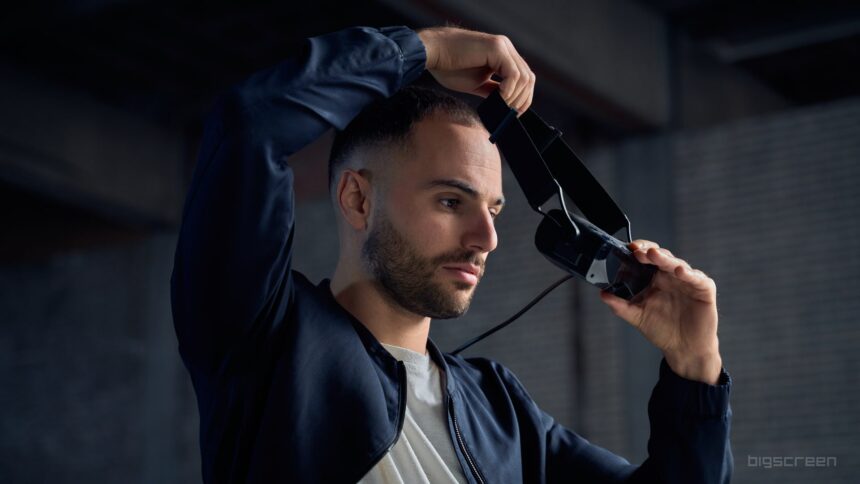Bigscreen Beyond is the world's smallest PC VR headset

June 1, 2023:
Bigscreen announced significant updates to the optical components of the Bigscreen Beyond, increasing FOV to 102 degrees and improving sharpness to 32 ppd.
The developer of Bigscreen Beta, a VR video streaming app, just announced a tiny, new PC VR headset with several unique features.
Priced at $1,000 for the headset alone, without controllers, Bigscreen Beyond costs as much as other recent premium VR headsets. It introduces a new approach to comfort that might give it an edge over the competition.
This PC VR headset works with Steam VR controllers and tracking, which are available separately. If you already own a Steam VR system, Bigscreen Beyond should work without additional hardware. If you use a Quest headset, you'll need Lighthouse 2.0 trackers and controllers to use the Beyond headset, along with a VR-ready PC. Our guide to virtual reality will explain what's required.
When you place an order for Bigscreen Beyond, the facial interface is custom molded specifically for you. This is accomplished with the help of an iPhone that includes a TrueDepth camera. If you don't have an iPhone XR or newer (iPhone SE won't work), you'll need to borrow one from a friend to do a FaceID scan.
A new formula for comfort
The result could be a VR headset of unparalleled comfort. Other manufacturers include various adjustments to accommodate the significant variation in human head size and shape. Interpupillary distance (IPD) is also measured for the Bigscreen Beyond.
For example, Meta tried very hard to optimize comfort for their $1,500 Quest Pro, but some found that it had pressure points since it didn't match the shape of their forehead.

A man is putting on a Bigscreen Beyond VR headset. | Image: Bigscreen, Inc.
The headset itself weighs just 127g, the lightest PC VR headset ever made. The total weight varies with the custom facial interface and IPD but ranges from 170g to 185g. The HTC Vive XR Elite is much heavier (273g) even when used in glasses mode. The compact Vive Flow also weighs more at 189g.
The only potential sticking point is the head strap, a single piece that wraps around the back of the head with no top strap. While light, the Bigscreen Beyond is entirely supported by your face. We need to test this headset ourselves before we can comment on whether this new approach yields ultimate comfort.
A return to OLED displays
Bigscreen, Inc. is best known as a software developer with its Bigscreen Beta video streaming app, yet based on early hands-on reports, this is a solid headset design. It's the first VR headset in many years to include an OLED display. This should deliver better blacks, higher contrast, and richer colors than headsets based on LCD screens.
Even headsets that use miniLED backlighting can't compete with a good OLED display. Bigscreen Beyond features dual one-inch microOLED displays with a display resolution of 2560x2560 pixels per eye. The refresh rate of 75 to 90 Hertz is a common standard of newer headsets. The field of view is about 90 degrees, which is rather small compared to other VR headsets. But something has to give for such a compact form factor.
By all measures, these should be sharp and vivid displays. Bigscreen paired these premium displays with pancake lenses to expand the sweet spot and enhance clarity.
Bigscreen Beyond is available to preorder now and is expected to ship in the third quarter of 2023. If you are in the market for a new PC VR headset, you should consider Bigscreen Beyond.
Keep an eye out for more details and a deeper dive into this unique custom-fit VR headset in the future. You can also check out Norman Chang's hands-on video at Tested for more impressions.
Note: Links to online stores in articles can be so-called affiliate links. If you buy through this link, MIXED receives a commission from the provider. For you the price does not change.